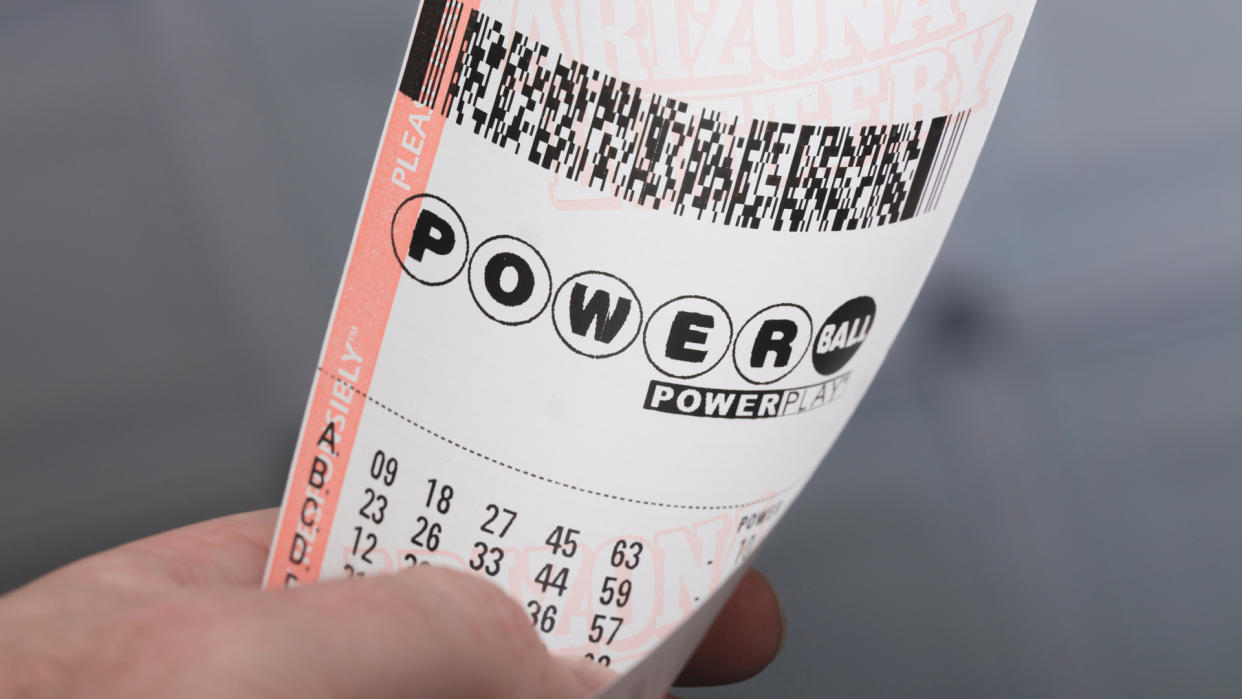How Much of the Powerball Cash Option Is Paid After Taxes?

In November 2022, the Powerball lottery broke records for any lottery drawing in history, with a $1.9 billion jackpot. The jackpot starts at no less than $20 million and grows by at least $2 million with each drawing if no one wins. But how does that translate to take-home winnings?
See: How to Build A Financial Plan From Zero
How Much Do You Get After Taxes If You Take The Lump Sum in Powerball?
Winning the jackpot and taking home a huge sum of money sounds great, but it’s not that simple — after taxes, you could end up with just over $8 million out of a jackpot of $20 million, depending on your deductions and credits.
Federal Taxes
If you win the minimum $20 million jackpot and choose the lump sum payout, the Federal government withholds 24% from your winnings automatically. If you are looking at a $12 million payout — roughly the lump sum option for a $20 million jackpot — you’ll pay $2,880,000 in taxes before you see a penny. Now you are down to $9,120,000 in your pocket.
But you won’t want to spend it all before you file your federal and state tax returns the following year. If your winnings plus your income put you over the top marginal tax rate, you’ll have to pay the difference between 37% — the highest marginal tax rate — and the 24% already withheld.
It can get complicated to calculate your actual tax bill without an accountant, and lottery winners will certainly have some deductions and tax credits to reduce their tax liability. But it’s safe to say you can deduct another 10% or so, or close to a million dollars, to pay federal taxes.
Of course, this is a rough estimate, but you’re now left with just over $8 million from your $20 million lottery win.
State Taxes
Depending on the state where you purchased your winning ticket, you might have to pay state income taxes, too. If you buy your ticket in New York, you’ll pay the highest state taxes of 10.9%.
Winners in California, Florida, New Hampshire, Puerto Rico, South Dakota, Tennessee, Texas, the U.S. Virgin Islands, Washington and Wyoming do not pay state tax on lottery winnings.
What Is Powerball?
The Powerball is coordinated by the Multi-State Lottery Association and runs in 45 U.S. states. The jackpot and payout is the same for all states, but you must redeem your ticket in the state where it was purchased.
To win the Powerball jackpot, you’ll need to match the numbers on the five white balls drawn plus the red Powerball. If multiple people choose the winning numbers, they split the prize payout. However, the largest Powerball jackpot in history, $1.9 billion, had a single winner: Edwin Castro, who purchased his ticket at Joe’s Service Center in Altadena, California.
Your Powerball Lottery Payout Choices
Winners have two choices in Powerball payouts:
Cash value lump sum payout, minus withholding taxes
Yearly annuity payments, minus taxes
What Is the Lump Sum Payout for Powerball?
The lump sum payout for Powerball is typically about 60% of the total advertised price. So, a $20 million jackpot winner — the minimum advertised jackpot — would receive $12 million, minus withholding taxes.
While that’s a lot less than the $20 million jackpot, you could probably think of a lot of ways to spend $12 million. Just don’t forget to account for those income taxes.
What Is Annuity Payout for Powerball?
If you choose the annuity payout option, you’ll receive 30 annual payments: one when you claim the prize and one every year for the next 29 years.
The annuity payout is a larger amount overall, because the lottery association invests the money and pays you an annuity from the earnings. The advertised lottery amount reflects the winnings based on the investment returns.
Annuity Payout Taxes
You will also need to pay taxes on your annuity income. If you divide that $20 million minimum jackpot by 30, you can see you’ll receive $666,666.66 per year, before taxes. That’s not a bad annual salary to live on in even the priciest U.S. cities.
However, your annuity payments on a $20 million Powerball put you in the highest marginal tax bracket — 37% — and very close to that amount if you are married, filing jointly. In tax year 2023, individual taxpayers with incomes higher than $578,125 or married couples filing jointly who bring in more than $693,750 combined get taxed at the marginal rate of 37%.
Remember, most Powerball payouts are much higher than the minimum starting jackpot, so it’s likely your annuity income will be taxed at the highest rate.
Is It Better to Take Lump Sum Or Annuity Payout Powerball Winnings?
In spite of the smaller cash payout for the lump sum Powerball and the massive tax bill, most people choose the lump sum payout. In fact, no winner has chosen the annuity option since 2014. Most people take the lump sum and speak to a financial advisor to help them invest the money at a higher return.
With interest rates rising, now could be a smart time to choose the annuity payout — especially if you aren’t confident you can resist the temptation to spend it all if you get a lump sum. However, if you feel you can invest the money for a higher yield than government bonds, which is where lottery money is held, the lump sum cash value payout still remains the best choice.
Information is accurate as of April 14, 2023.
This article originally appeared on GOBankingRates.com: How Much of the Powerball Cash Option Is Paid After Taxes?
